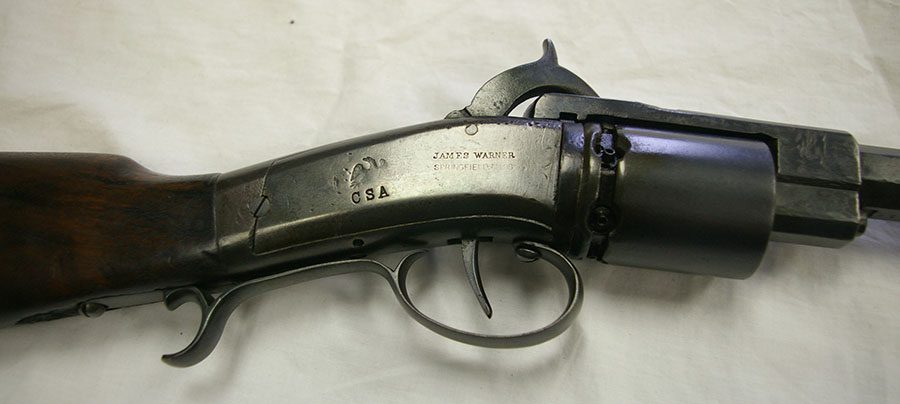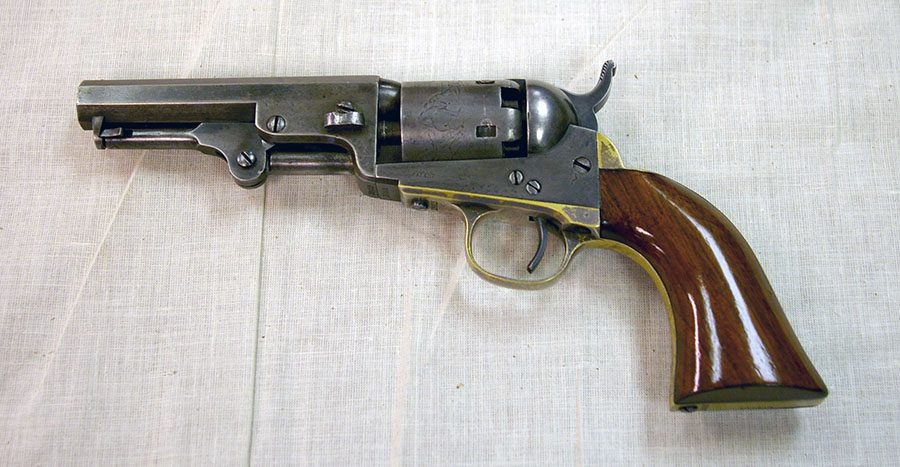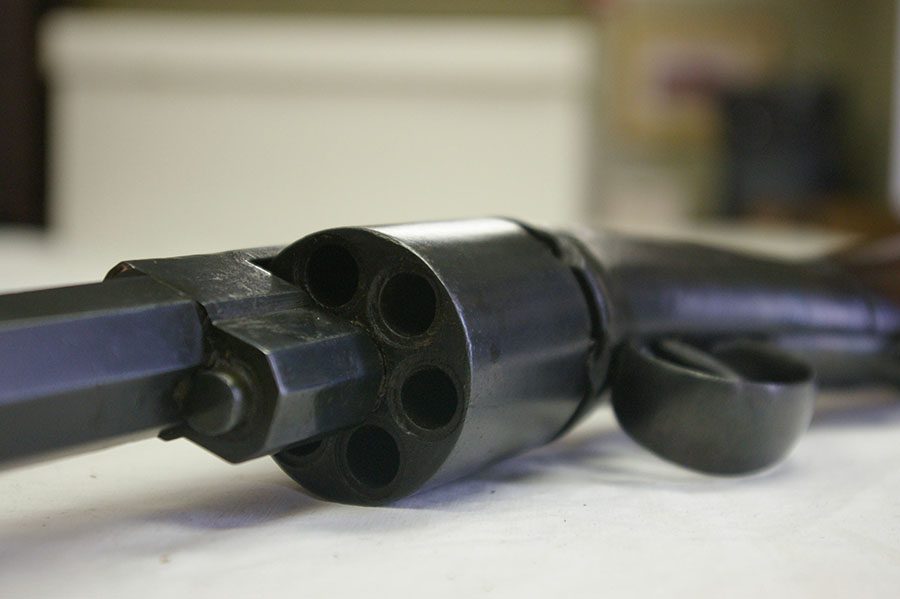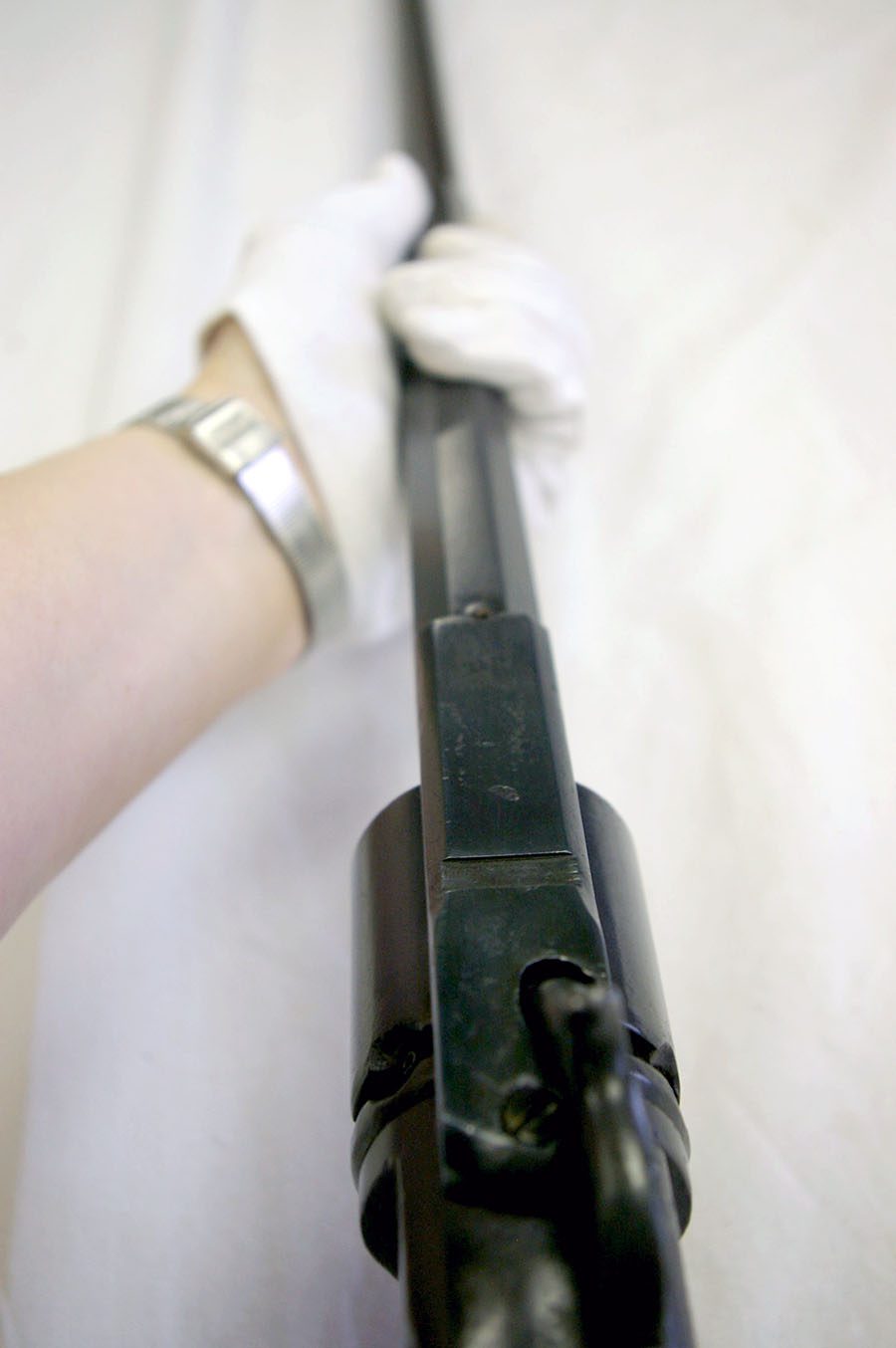
In early July, the Lights, Camera…History! summer campers came to visit the Ohio History Connection history collections. The campers came to learn about Civil War objects in preparation for making a short film about Morgan’s Raiders, which you can see here. History curator Cliff Eckle put together a great tour and program about Civil War weapons. The Warner rifle was perhaps the most interesting piece among the dozen Civil War-era weapons we showed the campers.
James Warner manufactured the revolving rifle in Springfield, Massachusetts, around 1849. Warner’s rifle was one of the first repeating rifles, meaning it could fire multiple bullets without needing to be reloaded between each shot. Repeating rifles were more effective in battle than single-shot weapons because soldiers could fire more bullets in a shorter amount of time. The Warner rifle is a six-shot, .40-caliber weapon, and this particular one bears the initials “CSA” for the Confederate States of America on its lock.
rifles, meaning it could fire multiple bullets without needing to be reloaded between each shot. Repeating rifles were more effective in battle than single-shot weapons because soldiers could fire more bullets in a shorter amount of time. The Warner rifle is a six-shot, .40-caliber weapon, and this particular one bears the initials “CSA” for the Confederate States of America on its lock.
 To create a repeating rifle, Warner adopted existing breech loading technology from pistols. Pistols such as the Colt Model 1849 Pocket revolver pictured here have a cylinder holding five shots. These cylinders could be pre-loaded with a percussion
To create a repeating rifle, Warner adopted existing breech loading technology from pistols. Pistols such as the Colt Model 1849 Pocket revolver pictured here have a cylinder holding five shots. These cylinders could be pre-loaded with a percussion
cap, powder and bullet and enabled shooters to fire five consecutive shots before either reloading the cylinder or inserting a new, pre-loaded one. As you can see from the close-up of the Warner rifle, it uses a similar cylinder to achieve repeat firing capabilities, though its cylinder holds six shots instead of five.
 Though repeating rifles were superior in battle to single shot ones, the Warner rifle was not popular among soldiers during the Civil War because of one major flaw: the pre-loaded shots would sometimes fire when the chamber was not aligned with the cock. For a pistol, which is fired with one hand extended away from the shooter’s body, the occasional multiple firing resulted in nothing more than a poorly-aimed, simultaneous shot. For a rifle, which is fired with one hand supporting the stock as you can see in the picture, the stray shot would usually hit the shooter’s wrist, resulting in injury and often loss of the hand.
Though repeating rifles were superior in battle to single shot ones, the Warner rifle was not popular among soldiers during the Civil War because of one major flaw: the pre-loaded shots would sometimes fire when the chamber was not aligned with the cock. For a pistol, which is fired with one hand extended away from the shooter’s body, the occasional multiple firing resulted in nothing more than a poorly-aimed, simultaneous shot. For a rifle, which is fired with one hand supporting the stock as you can see in the picture, the stray shot would usually hit the shooter’s wrist, resulting in injury and often loss of the hand.